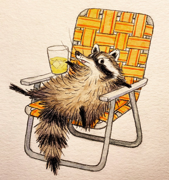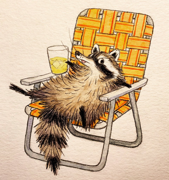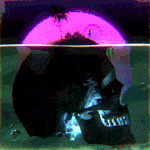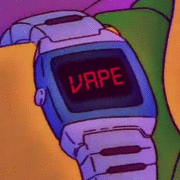|
tef posted:got a 150mm f/2.8 large format lens hell yeah
|
|
|
|

|
| # ? Apr 25, 2024 12:39 |
|
tef posted:got a 150mm f/2.8 large format lens I like the big number combined with the small number
|
|
|
|
420mm lens at f/6.9
|
|
|
|
tef posted:got a 150mm f/2.8 large format lens perfect for mounting to a gameboy camera
|
|
|
|
shooting this wedding on saturday wet cold and gray outside inside will be lit with something using only a 17-55 f/2.8-4 without a flash plan to set it to 55mm/f4 ~200ss and let the ISO free requesting thoughts and prayers
|
|
|
|
protect your highlights and if youíre iso is free, at least work out where your iso becomes unusable noise and keep that in mind. and good luck
|
|
|
|
big scary monsters posted:f2.8? drat, all my lf stuff is f5.6 or slower. what size film are you shooting? 4x5
|
|
|
|

|
|
|
|
holy poo poo mate just as a matter of curiosity what does a 4x5 bit of film cost
|
|
|
|
it's a good size. the cameras are still just about manageable to carry so you can actually get to cool places with them. although i remember a cool video of this japanese guy who went hiking in the forest with a 14x17 or something over his shoulder
|
|
|
|
echinopsis posted:just as a matter of curiosity what does a 4x5 bit of film cost it's been ages since i shot any but i remember b&w a couple USD a sheet, colour at least $5. i bought a load of well expired colour negative film on ebay and developed it b&w. worked ok and ended up way cheaper
|
|
|
|
how does over/under exposure work in film? it occurred to me that i have always had a digital sensor in-the-loop for the entire time i've been learning about photography (even real film got scanned by a negative reader with some pretty obvious sensitivity/noise issues when i worked in a drugstore photolab). i assume that film still has some kind of limiting factor and there can't be an image with 200 stops of dynamic range or whatever, but i have no idea what it looks like
|
|
|
|
Corla Plankun posted:how does over/under exposure work in film? in my experience I can over expose portra 400 a ton and it still looks good when scanned
|
|
|
|
Corla Plankun posted:how does over/under exposure work in film? like, on a physical level? or just aesthetically? physically, film (black and white for simplicity) is made of grains of silver halide crystals glued to plastic film. when light hits a crystal, there is a chance that a small area of the crystal (a few atoms) will be transformed into metallic silver. this silver particle is invisible, but when you put the film in a developing solution, the presence of that metallic speck triggers a chain reaction that causes the entire affected crystal to turn into silver. this makes the grain turn dark. this is statistical chemistry, so the more light you shine on a given area of the film, the more of those crystals will be triggered to turn dark. after developing, the fixer washes away the unexposed silver halide, with dark particles of silver left behind in areas that were brightly exposed, forming a black-on-clear negative image. if you overexpose the film, all of the particles will have been triggered and the whole area is black. if you underexpose, none of them will have been triggered and they will all get washed away. aesthetically, due to the statistical nature of this reaction, overexposure is better than underexposure. there is a long exponential tail where you keep adding more and more light, but most of it is just already hitting grains that were already exposed, so it isn't doing anything, and those last few unexposed grains just keep getting missed. this means that film continues to retain some detail even into severe overexposure. however, if the film is underexposed, you have a problem. the film cannot record any detail below the threshold that causes a crystal to change. there is a certain minimum level below which light is basically just ignored, and you have no detail at all because the crystals just get washed away even if some photons did hit them. this means that film is bad at recording underexposed scenes. in contrast, digital sensors are the reverse. a digital sensor records every single photon that gets into its wells, so it's good at underexposed scenes. but if you fill up the well, everything beyond that is simply clipped and ignored, and it isn't a statistical effect. all of the pixels will wash out simultaneously. so don't overexpose digital.
|
|
|
|
fascinating! i was mostly asking about the aesthetics i guess. its easy to pick up on digital over/under exposure due to the simple math/aliasing stuff but i guess i don't have a good enough understanding of the chemistry to be able to guess what a badly exposed (or, come to think of it, too-zoomed-in) photo looks like in a fully chemical development process with no daqs anywhere
|
|
|
|
sagebrush's post is pretty good. if it's still confusing maybe think of it as a physical engraving that you're making, idk, ink prints of. an "overexposure" in that case can be thought of as something with sharper relief: it's simply easier to make copies of you're making copies of a negative too
|
|
|
|
that notion of slowly saturating the grains creating that tailoff in the highlights is definitely the best part of film I shoot with the highlight priority extra thing enabled and so I very very rarely clip the highlights, meaning I can do what I want with them afterward. clipping on digital bites
|
|
|
|
Corla Plankun posted:i don't have a good enough understanding of the chemistry to be able to guess what a badly exposed (or, come to think of it, too-zoomed-in) photo looks like in a fully chemical development process with no daqs anywhere black and white film negative under a microscope:  each black blotch is a little speck of metallic silver that was converted from a halide crystal. overexposed areas have a denser spread of crystals with fewer clear areas in between (because it's a negative, recall). underexposed areas will have fewer blotches scattered across a clear field. it's basically the same idea as a dithered black and white gif, just with randomized "pixel" shapes and a more random distribution. here are the unexposed halide crystals on the film emulsion viewed with an electron microscope. after processing, each one of them will either be transformed into a black metallic silver dot that is fixed in place, or it will be dissolved and washed away. 
Sagebrush fucked around with this message at 06:39 on Mar 30, 2023 |
|
|
|
echinopsis posted:holy poo poo mate https://www.freestylephoto.com/category/2-Film/Black-and-White-Film?stock=0&attr%5B%5D=1-4&q= it's not cheap
|
|
|
|
Corla Plankun posted:fascinating! the thing to note is that people routinely over and under expose negatives by a few stops, and then under or overdevelop to compensate which is how you get "pushing film", or underexposing and overdeveloping, which usually gets you a heavier contrasty look and denser negatives and "pulling film", or overexposing and underdeveloping, which usually gives you lower contrast and thin negatives
|
|
|
|
the thing to bear in mind with film is that, well, it's not always a straight forward relation between "amount of light" and "amount of darkness on the negative" every film has a so called "characteristic curve" or h-d curve which plots the negative density vs the amount of light hitting it, and it's usually divided up into three sections, the toe, the straight line, and the shoulder when you expose a film normally, you aim to fit as much of your image inside the straight line section, which gives good tonal separation and hopefully captures the full range of light levels in your shot if you underexpose, you're kinda moving your photo onto the left side of the curve, the toe. this means that darker tones tend to get lumped in together, but the highlights are still cleanly separated. on the other hand, if you overexpose, you're kinda moving to the right side of the curve, the shoulder, and for this film, this means that the highlights get compressed, but darker tones in your image stand out more i picked fp4 here because it has a very distinctive curve. it's worth noting that most films tend to have a bit of a toe, compressing the blacks, and not much of a shoulder, which means you can overexpose and still pull out the highlights. this is where "Expose for the shadows, develop for the highlights" comes from. you work out the darkest part of your image, and position it at the bottom of the straight line section, and then when it comes to developing, you're controlling the final contrast of the negative, trying to ensure that the highlights don't get too toasty on the negative it's also why pushing film (underexposing) tends to give very dark, moody images, and why pulling film tends to make everything feel a bit flat and low contrast
|
|
|
|
aside, 35mm used to be considered "miniature film", which is why things like 110 and minox are called subminiature. i even found an old book which talks about 4x5 as being medium format, because it's only a little bit bigger than 120, when compared to things like 8x10 or higher.
|
|
|
|
Sagebrush posted:like, on a physical level? or just aesthetically? tyvm for this post. how does the negative become a print
|
|
|
|
Bloody posted:tyvm for this post. how does the negative become a print you take a photograph of it
|
|
|
|
thanks for the filmsplanation
|
|
|
|
photo printing paper is treated with (basically) the same silver halide solution as the film. you put your negative in an enlarger -- a vertical slide projector with variable focus and magnification -- and project the negative image onto the paper, exposing it just like film. when the paper is processed you get a negative of the image that was exposed, which was already a negative, so the paper now contains a positive.
|
|
|
|
Bloody posted:tyvm for this post. how does the negative become a print You go into your big reverse camera room and expose some paper that has been treated with the same chemicals as the film to a projection of the negative.    The chemicals you use to develop the paper are the same ones you used to develop your film.
|
|
|
|
Your editing process is the same as in lightroom but physical. If you want to add or remove contrast you change filter, the paper has 2 layers of sensitive silver and they're reactive to different colours of light so by adjusting the colour of the light coming out you can adjust contrast. If you want to make a part of your image darker or lighter then you can dodge and burn, which is using physical objects to block parts of the image from exposure to expose parts for less or more time. If you want to crop you just make the picture bigger on the easel, or move the borders around. If you want to alter perspective you can tilt the head of the enlarger and tilt the easel you print on, like keystoning you see in a projector.
|
|
|
|
 /  55mm isn't enough! it's not enough! HAIL eSATA-n fucked around with this message at 16:10 on Mar 30, 2023 |
|
|
|
go wide and you wish youíd have died go long and youíll get that shot thatís a rhyme they used to tell around the table at lens conventions in the 70s and itís still true today
|
|
|
|
https://www.lensrentals.com/blog/2023/03/how-your-camera-and-image-processor-determine-colors/ this seems to be a very good article on camera or something
|
|
|
|
tef posted:got a 150mm f/2.8 large format lens i eventually ran the numbers and it gives comparable depth of field to a 50mm f/0.95 lens or something even more whacky for 40mm, which is the equiv focal length
|
|
|
|
is that like the canon dream lens numbers
|
|
|
|
i have something thats roughly equivalent to that, the dof owns
|
|
|
|
beeftweeters mo is inserting star trek into every thing possible
|
|
|
|
echinopsis posted:beeftweeters mo is inserting star trek into every thing possible 
|
|
|
|
echinopsis posted:is that like the canon dream lens numbers pretty much, although there's a couple of f/0.95s on the market now that aren't ebay collector prices https://www.venuslens.net/product/argus-45mm-f-0-95-ff/ this is probably the best one in terms of build/price, i got the 35mm version https://zyoptics.net/product/mitakon-speedmaster-50mm-f-0-95-iii/ this one also comes in m-mount and ef-mount, and it ain't the sharpest lens but it does look great
|
|
|
|
i feel like there's basically zero functional difference these days between an f/0.95 and a far cheaper, smaller, and more available f/1.4. the extra speed is negligible in this era of iso 100,000 sensors and image stabilization, and i doubt anyone will really notice the difference between a microscopic depth of field and a slightly more microscopic depth of field. i admit it's a flex though
|
|
|
|
Sagebrush posted:i feel like there's basically zero functional difference these days between an f/0.95 and a far cheaper, smaller, and more available f/1.4. the extra speed is negligible in this era of iso 100,000 sensors and image stabilization, and i doubt anyone will really notice the difference between a microscopic depth of field and a slightly more microscopic depth of field. tbh, you end up stopping down unless you want one eye in focus and the other one out. there isn't usually much extra speed in terms of light transmission in the f/0.95s, it's kinda more like a f/1.2 lens but, well, it is fun to shoot with, and the f/0.95s are still kinda cheap for what they are. you'd spend more on a f/1.4 from sigma or voigtlander even so i do shoot digital with a 50/1.2 and yeah, if you do a lot of indoors work with lovely lighting, it will make a bit of a difference, if only for autofocus hit rates
|
|
|
|

|
| # ? Apr 25, 2024 12:39 |
|
f/1.4 is for wedding photographers, f/1.8 is absolutely fine for indoors work, and f/2.8 is perfectly good bokeh if you're shooting in good light but goddam, the laowa 35mm f/0.95 is a lovely lens to shoot with. there isn't the same super thin DoF as with a 50 or longer, and narrow DoF on a wide lens is such a look but, well, the nicest bokeh i've ever used is from a 100mm lens because it used "smooth trans focus", even though it was slow as poo poo and transmitted light terribly (but yeah i am a huge dork and i do shoot film with fast lenses because there's only so many times you can blind someone with a speedlight in the pub)
|
|
|


















